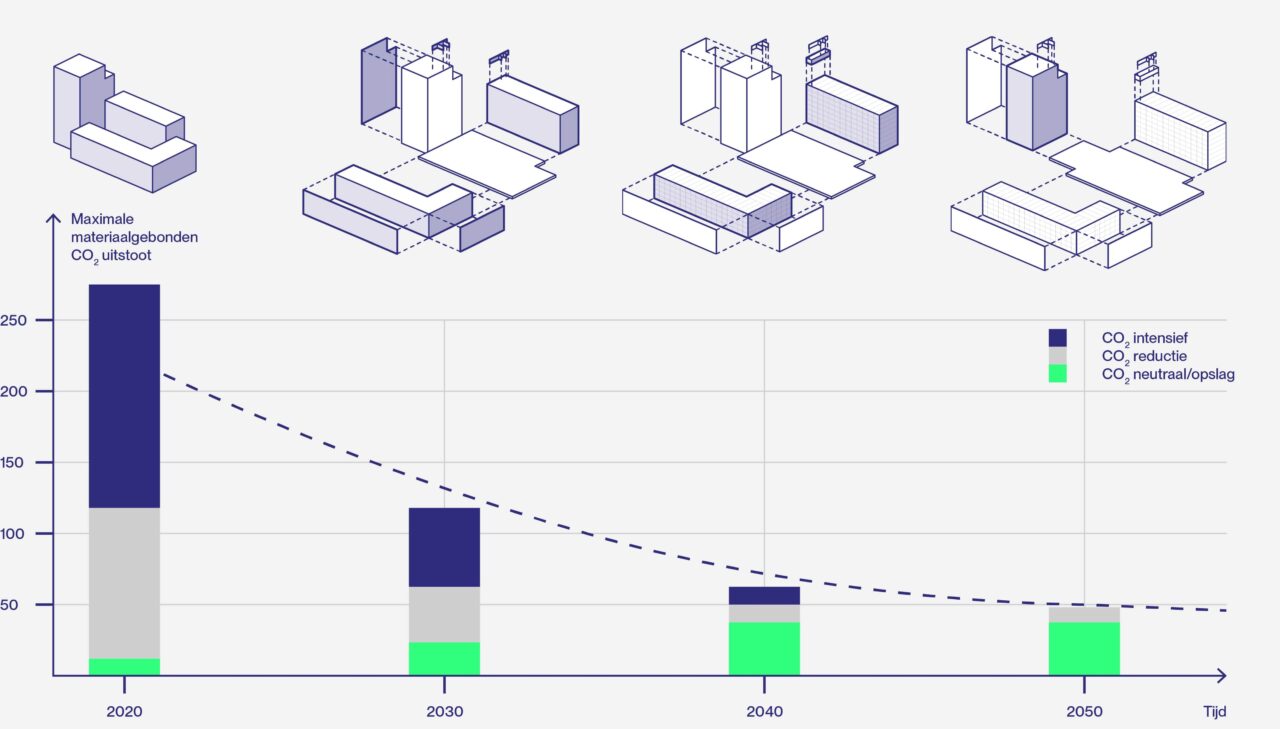Carbon-based Design

Carbon-based Design
Measuring is knowing
Carbon-based design starts with insight. We make CO₂ emissions measurable from the first sketch and link design choices to material data from the NMD and our own sources. This way, we focus on reduction, in line with the 1.5°C goal of Paris. We use Paris Proof target values (NIBE, DGBC) as guidelines to gradually work towards a zero-emission built environment – and make that ambition concrete, verifiable, and achievable.
Hybrid timber construction
The materials transition requires realistic choices. In our approach, we avoid black-and-white thinking: not either biobased or traditional, but a smart combination of both. Hybrid construction makes it possible to gradually increase sustainability – using biobased, circular, or CO₂-extensive materials where possible. In every project, we seek the maximum impact on emissions reduction, without compromising on quality, feasibility, or design freedom.
Parametric Design
We are developing tools to manage CO₂ from the early design phase. The Carbon Cost Tracker (CCT) shows in real-time the impact of design choices on material-related emissions. We apply this in feasibility studies and share it via an online demo. Together with, among others, the Municipality of Amsterdam, we are building tools for infrastructure and area level – so that data-driven CO₂ management becomes widely applicable.
Knowledge Development
The material transition requires the development of knowledge and technology. We collaborate with modular system builders who provide quick solutions, often in smart hybrid combinations. In addition, we are developing a new timber construction method ourselves, with partners De Nijs and Luning Houttotaal. Integral building nodes are central to this: technical connections where construction, insulation, facade, and more come together. From these nodes, we design flexibly per location and maximize the use of space – for feasible, high-quality timber construction.
Low Carbon Urbanism
Design choices at the regional level can also have a significant impact on CO₂ emissions. Infrastructure, building height, density – together they determine whether a plan remains within Paris Proof limits. That is why we are developing parametric tools for urban design and conducting studies with partners such as Metabolic and Copper8. In this way, we already make sustainable choices in the planning phase transparent, measurable, and manageable.
Publications
We actively share our knowledge – through lectures, workshops, and publications. For example, we have written about carbon-based design and research into wooden construction. We enjoy engaging in discussions with our clients to learn together and accelerate towards a Paris Proof built environment.


























